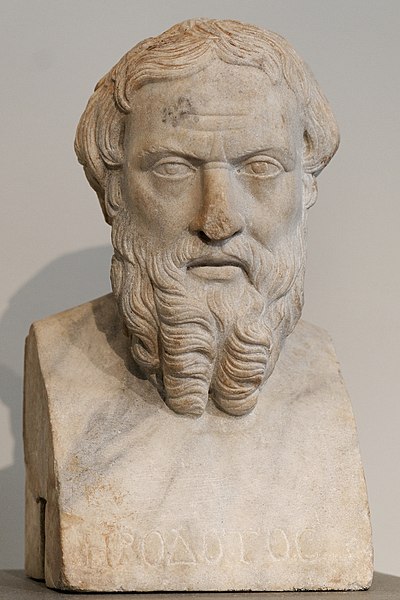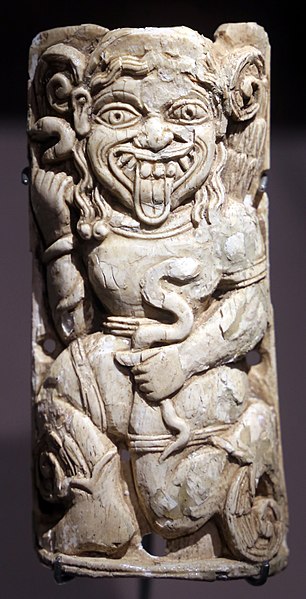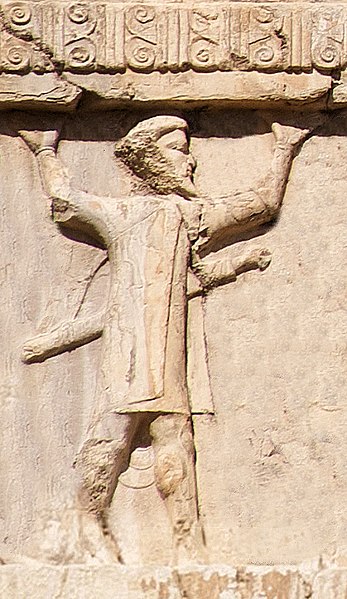The Greco-Persian Wars were a series of conflicts between the Achaemenid Empire and Greek city-states that started in 499 BC and lasted until 449 BC. The collision between the fractious political world of the Greeks and the enormous empire of the Persians began when Cyrus the Great conquered the Greek-inhabited region of Ionia in 547 BC. Struggling to control the independent-minded cities of Ionia, the Persians appointed tyrants to rule each of them. This would prove to be the source of much trouble for the Greeks and Persians alike.
Combat between a Persian soldier (left) and a Greek hoplite (right), depicted on a kylix at the National Archaeological Museum of Athens
Herodotus, the main historical source for this conflict
Thucydides continued Herodotus's narrative
Persian and Median Immortals in ceremonial dress, bas-relief in Persepolis
Ionia was an ancient region on the western coast of Anatolia, to the south of present-day İzmir, Turkey. It consisted of the northernmost territories of the Ionian League of Greek settlements. Never a unified state, it was named after the Ionians who had settled in the region before the archaic period.
Mount Mycale, site of the Panionium
Gorgone with serpent, Ionia, 575-550 BC.
One of the earliest electrum coins struck in Ephesus, 620–600 BC. Obverse: Forepart of stag. Reverse: Square incuse punch.
Ionian soldier of the Achaemenid army, c. 480 BCE.








